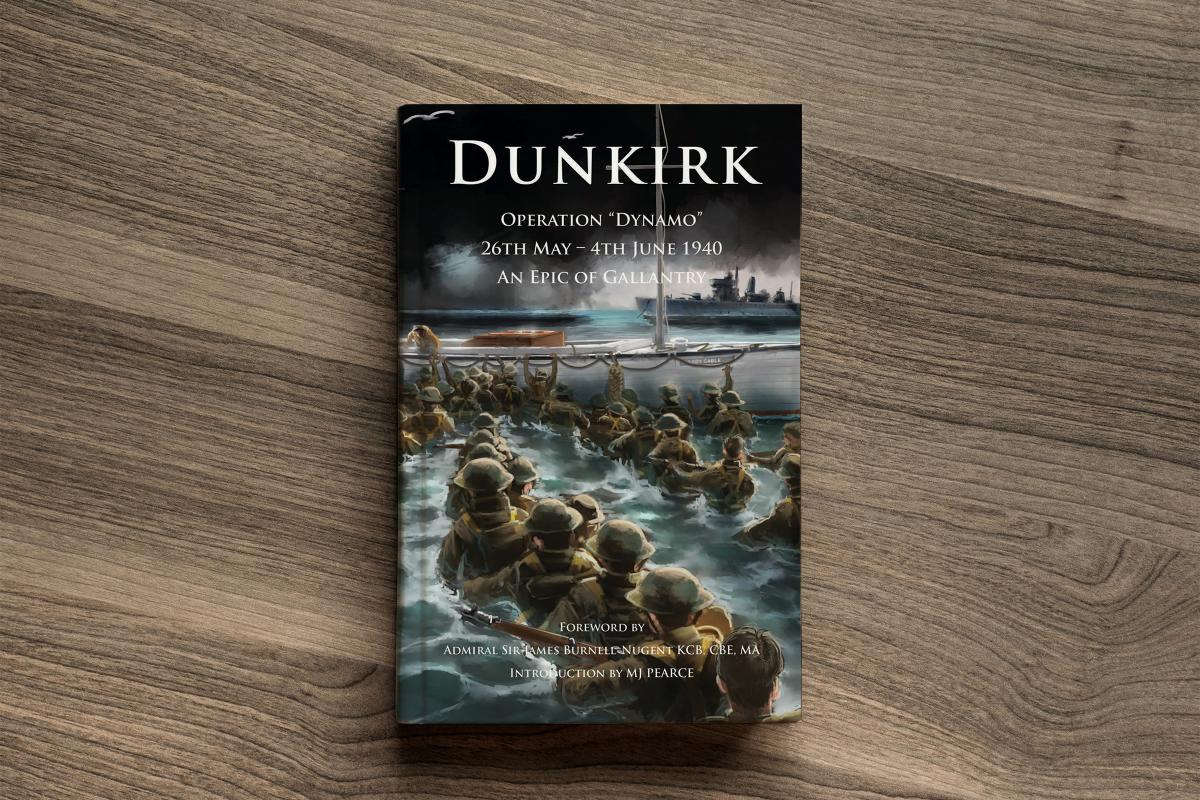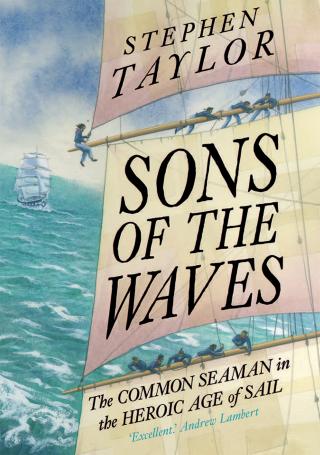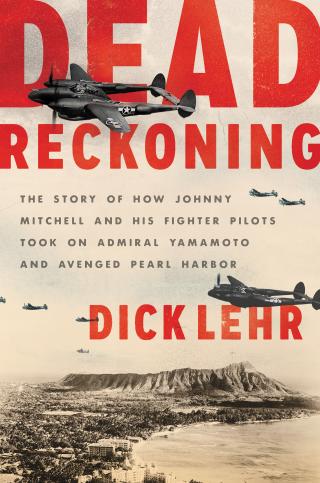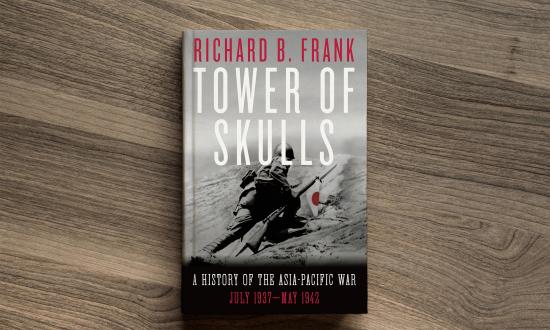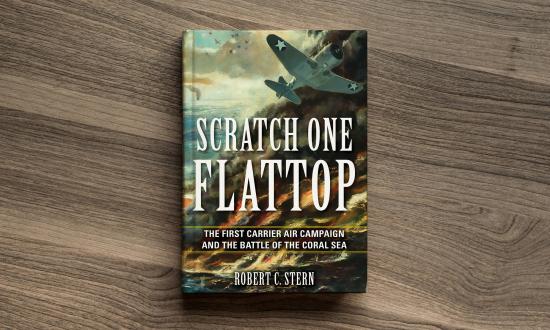Dunkirk: Operation “Dynamo” 26th May–4th June 1940: An Epic of Gallantry
Foreword by Admiral Sir James Burnell-Nugent, Royal Navy (Retired); introduction by M. J. Pearce. Dartmouth, UK: Britannia Museum Trust Press, 2020. 420 pp. Illus. Notes. Appxs. $18.60.
Reviewed by Evan Mawdsley
Eighty years after the event, the evacuation of the British Expeditionary Force (and many French personnel) across the Channel from Dunkirk in late May and early June 1940 remains one of the pivotal events of World War II. For the British, at least, it is a central part of their narrative of the war. Meanwhile, popular knowledge of Operation Dynamo has increased with the success of the award-winning 2017 film Dunkirk.
The only criticism that can be made of this book is that, on the cover and elsewhere, its contents might have been made clearer. Four-fifths of the volume (pp. 115–416) consists of a reformatted version of the 1949 Royal Navy in-house “staff history,” Battle Summary No. 41 (B.R. 1736). Reformatting has meant the loss of a small part of the flavor of the original, but this was probably necessary to fit readable text into the current page size. One thing that the reader might regret is that the editors of the present volume chose not to include the detailed table of contents or, indeed, to take the opportunity to provide a full index. There are numerous abbreviations in the battle summary relating to ship types and sources, and a glossary explaining these would have been useful. It is surprising that no reference seems to be made to the publication by Frank Cass in 2000 of the same staff history, under the editorship of W. J. R. Gardner, who also wrote a preface.
Although they originally were confidential, a number of battle summaries have been published, some in the Britannia Naval Histories of World War II series. They are very valuable for learning about the actual course of operations and the forces involved. Often, more detail is provided than in the “open” official histories, and they are more complete than postwar published dispatches. The in-house battle summaries also were somewhat more likely to inject criticism. No. 41 was no exception, and it provides a highly detailed day-by-day account of the naval side of Dunkirk. There are no fewer than 26 appendices, covering 85 pages. Also included in this reprint are the detailed maps of Dunkirk and the evacuation routes included in the original.
Although Battle Summary No. 41 has been published before, this version contains several extras. A moving foreword is provided by Admiral Sir James Burnell-Nugent, former Commander-in-Chief Fleet (2005–07), whose father took part in Dynamo as captain of the destroyer HMS Havant. Naval historian Michael Pearce, a civil servant who taught at Britannia royal Naval College, wrote a 40-page introduction. This colorful yet serious narrative account covers not only Dynamo, but also the attempted evacuation of British forces further west, unsuccessful at Saint Valery-en-Caux, but more important [sic] (and less well remembered) at Cherbourg and St. Nazaire. Again, it would have been useful to have something in this introduction about the writing of the 1949 staff history and who was involved.
Another very valuable feature is the more than 50 pages of outstanding photographs from the Britannia Museum collection. These depict the dramatic events at Dunkirk and offshore and a large number of the warships and merchant vessels involved in Dynamo. Alert readers may notice that the wrecked aircraft shown on page 75 is incorrectly described an NA-64 trainer (an early version of the AT-6/SNJ); it is, in fact, an even more interesting Vought SB2U Vindicator, one of a small number bought by the French Navy.
Issues of packaging aside, the Britannia Museum Trust has done a great service by making available again, and at a low price, this highly detailed narrative of Operation Dynamo. It is essential reading for anyone interested in this dramatic and important subject.
Professor Mawdsley is attached to the School of Humanities at the University of Glasgow. His most recent book is The War for the Seas: A Maritime History of World War II (Yale University Press, 2019).
Sons of the Waves: The Common Seaman in the Heroic Age of Sail
Stephen Taylor. New Haven, CT: Yale University Press, 2020. 416 pp. Preface. Prologue. Notes. Biblio. Index. Illus. $30.
Reviewed by Frederick C. Leiner
Other historians have examined common sailors during the Age of Sail, but none like Stephen Taylor in Sons of the Waves: The Common Seaman in the Heroic Age of Sail. Taylor has portrayed the British “Jack Tar” at his apogee, from 1740 to 1840, by carefully mining all the known, if obscure, memoirs of British seamen to provide a “ground-up” history. Through the voices of the “lower deck,” Taylor covers the lives of seamen in the merchant trade, in exploration, in the slave trade, and, above all, serving in the Royal Navy. To their voices, he adds sparkling narrative and insightful commentary. Although famous naval officers such as Anson, Nelson, and Pellew appear in this story, this book is not about them. Reading Sons of the Waves is like seeing Tom Stoppard’s Rosencrantz and Guildenstern Are Dead, after watching Hamlet: The central players here are those whom most historians treat as minor characters. Here, those who, in the standard histories of battles and leaders are treated as the major characters, make only brief appearances.
Taylor proceeds both chronologically and thematically. He traces the stories of individual Jack Tars in exploring the South Seas, serving on slave ships and merchant ships, and fighting Americans, Frenchmen, Spaniards, Dutchmen, and Danes. He covers the 1797 mutinies at Spithead and the Nore, the blockade and far-flung wars against the Napoleonic Empire, the suppression of the African slave trade, and the slow decline of the culture and character of Jack Tar with the advent of steam power.
Over the course of 26 chapters, both through Taylor’s witty writing and the words of the seamen themselves, one reads a collage of vignettes. Some are funny, others are poignant; together, they provide a strong sense of sailors’ lives afloat. In several places, such as where Taylor writes of topmen aloft, loosing the sails, or about the seamen’s own thoughts about the inexorable and ultimately unknowable sea, his writing is lyrical. The reader learns much of the hard-drinking, carousing, blaspheming British tars, their fears, and their thoughts about flogging, fighting, sex, and shipmates. Taylor, a former journalist and author of a first-rate biography of Sir Edward Pellew (Commander: The Life and Exploits of Britain’s Greatest Fragile Captain), among other books, is masterful, capturing moments or sensations in a way that few historians can equal.
Sons of the Waves takes its name from a line from “Heart of Oak,” a song composed by William Boyce in 1760 that characterizes Britain’s sailors as “jolly tars.” “Jolly” they may not always have been, but the overall picture Taylor presents is one of hardy and hearty men, resourceful, sentimental, and generally tolerant of their shipmates. Over time, and as accidents, disease, and battle took their toll, more and more men were pressed against their will into naval service.
Although they served loyally, there were breakdowns in order, when a captain or conditions were simply too onerous; by 1797, the wages of the common sailor had not been increased by Parliament in 150 years. Taylor writes at length about the great mutinies at Spithead and the Nore, but he also delves into the smaller, sadder episodes on HMS Culloden, Blanche, and Temeraire, incidents hardly known today. He shows how the Royal Navy became increasingly cosmopolitan over the years; it came to include all sorts of Europeans, “lascars,” free and enslaved blacks, and Americans, some of whom were impressed and others who volunteered. Throughout the Age of Sail, there was an enormous social gap between officers, who were “gentlemen,” and the men from the lower deck, who were not, but the spirited British tar made the Royal Navy triumphant.
Sons of the Waves will become a classic. Beautifully written and easy to read, based on original, virtually unknown memoirs, it is filled with insights and experiences of the common sailor that both confirm and defy modern assumptions. The book provides a vivid picture of Jack Tar in his element, a belligerent, bawdy, drink-loving, stolid fellow, who kept England safe and made Britain the great naval and mercantile power of the 18th and 19th centuries.
Mr. Leiner, a lawyer, is a regular contributor to Naval History about the Age of Fighting Sail. He is the author of The End of Barbary Terror: America’s 1815 War against the Pirates of North Africa (Oxford University Press, 2006) and Millions for Defense: The Subscription Warships of 1798 (Naval Institute Press, 2000).
Dead Reckoning: The Story of How Johnny Mitchell and His Fighter Pilots Took on Admiral Yamamoto and Avenged Pearl Harbor
Dick Lehr. New York: HarperCollins, 2020. 331 pp. Maps. Photos. Notes. Biblio. Index. $28.99.
Reviewed by Elliot Carlson
By now the daring raid that ended the life of Japan’s iconic naval leader, Admiral Isoroku Yamamoto, has become virtually a touchstone of the Pacific war, demonstrating that it was not only a monumental clash between embittered enemies bringing to bear against each other huge numbers of men and hardware across vast ocean expanses; but also very personal.
In Dead Reckoning, investigative journalist Dick Lehr tells the personal side of the raid through its two protagonists: Army Air Forces Major John W. Mitchell, the virtuoso flyer who organized and led the air strike, and Yamamoto, the reviled mastermind of the Imperial Japanese Navy’s surprise attack on Pearl Harbor on 7 December 1941. Lehr—a professor of journalism at Boston University—draws on personal papers, diaries, and family letters to depict Mitchell. The pilot emerges as the archetypal flyboy; he had wanted to fly since he was a child growing up in rural Mississippi, enthralled by the barnstormers who came by to put on air shows. He pursues his dream but stumbles early when he flunks his West Point entrance exam. He joins the Army Air Corps and starts at the bottom, as a trainee pilot: This time he clicks.
By late 1942, Mitchell is flying P-38 fighters with the Cactus Air Force—Cactus being the code name for Guadalcanal, in the Solomon Islands. He excels in dogfights, scoring eight victories, a total making him an “ace” (he needed five). By April 1943, his big concern is alleviating the worries of the girl he married right after Pearl Harbor.
Yamamoto’s story also has a personal side; Lehr shows Yamamoto growing increasingly fatalistic as Japan sustains crushing defeats at Midway and Guadalcanal.
The lives of Mitchell and Yamamoto begin to converge on 14 April 1943. Codebreakers at Pearl Harbor decrypt a Japanese message laying out Yamamoto’s itinerary for a flight four days later across Japanese-held Bougainville Island—some 350 miles from Guadalcanal. Pacific Fleet Commander Admiral Chester W. Nimitz orders an intercept—in today’s parlance, a “targeted killing”—very possibly doing so without an official okay from Washington (the historical record is murky on this). The order reaches Rear Admiral Marc “Pete” Mitscher, Commander, Air Forces, on Guadalcanal. When Mitscher finds that Navy fighters lack the range to make the thousand-mile round trip, he brings in Mitchell; his longer-legged Army P-38G Lightnings can do the job.
Mitchell’s meeting with Navy officers leads to a fascinating face-off. Lehr’s account adds new details. Hearing the Navy’s plan to “take out” Yamamoto after his plane has landed; Mitchell balks: “I don’t want to do that.” He thinks the attack should occur while all planes are still in the air. Mitscher listens, then entrusts the mission to the Army major. Mitchell judges the operation’s chance of success at 1,000 to 1, but he meticulously plans the action. The next day, 18 April 1943, he leads 16 P-38s in a roundabout flight path, devised by him to avoid Japanese-held islands and elude Japanese radar; the planes “wave-hop” across 435 miles of trackless ocean to Bougainville, arriving just ahead of their target—two GM4 “Betty” bombers escorted by six Zero fighters. The P-38s take down both Bettys, with the loss of one Lightning. One bomber carried Yamamoto; the mission is deemed a success. The Japanese people are stunned by Yamamoto’s death; many Americans feel Pearl Harbor has been avenged.
After the shootdown, two of Mitchell’s pilots feuded for years over which one fired the fatal bullets (the Army later gave half credits to each). One P-38 pilot, First Lieutenant Besby F. Holmes, deplored the quarrel, arguing that it distracted attention from “the superb leadership and navigational ability of Major John Mitchell.” By putting the spotlight on Mitchell, Lehr has filled a hole in the Yamamoto saga. He has shaped familiar material into a gripping account of the intercept and forged an affecting portrait of the “natural-born leader” who organized it.
Mr. Carlson is the author of Joe Rochefort’s War: The Odyssey of the Codebreaker Who Outwitted Yamamoto at Midway (Naval Institute Press, 2011).



